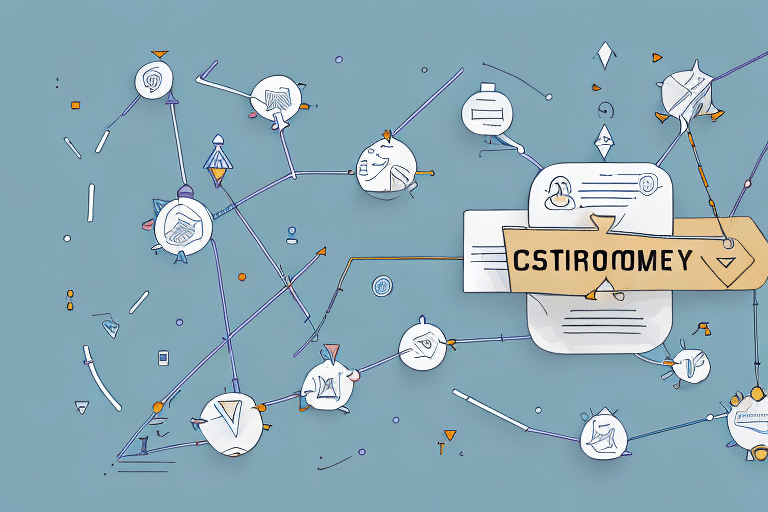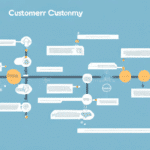7 Strategies for Improving Customer Retention
Running a successful business is always challenging, especially in today's highly competitive landscape. Organizations that focus solely on attracting new customers while ignoring their existing ones are not only missing out on potential revenue but also risk customer dissatisfaction and alienation.
That's why customer retention should be a priority for every business. By improving customer retention, companies can build meaningful, long-lasting relationships with their customers, leading to increased loyalty, higher revenue, and an improved reputation.
1. Importance of Customer Retention
Customer retention refers to the ability of a company to keep its customers loyal and engaged with the brand over time. This is a crucial metric since existing customers are often more profitable and valuable compared to new ones.
- Increased Revenue: According to Forbes, repeat customers spend approximately 67% more than new customers.
- Cost-Effectiveness: It is generally 5-25 times cheaper to retain a customer than to acquire a new one (Harvard Business Review).
- Brand Advocacy: Satisfied customers are more likely to recommend your brand to others, providing invaluable word-of-mouth marketing.
Additionally, loyal customers provide valuable insights into their behavior and preferences, enabling companies to refine their marketing and product development strategies.
2. Understanding the Customer Journey and Touchpoints
Improving customer retention begins with a deep understanding of the customer journey—the complete process from initial awareness to post-purchase experience.
Mapping the Customer Journey
Identify all the touchpoints where customers interact with your brand, such as:
- Awareness through marketing channels
- Consideration via website visits and product comparisons
- Purchase through e-commerce platforms or physical stores
- Post-purchase support and engagement
Analyzing Customer Behavior
Use analytics tools to track customer interactions and identify patterns. Tools like Google Analytics and HubSpot CRM can provide insights into customer preferences and pain points, allowing you to tailor your strategies effectively.
3. Creating a Personalized Customer Experience
Personalization is key to making customers feel valued and understood. By tailoring experiences to individual needs, businesses can foster deeper connections and enhance loyalty.
Targeted Marketing Campaigns
Utilize customer data to create personalized marketing messages. For instance, sending tailored email campaigns based on past purchases can significantly increase engagement rates.
Customized Product Recommendations
Implement recommendation engines that suggest products based on customer behavior. Amazon's recommendation system reportedly contributes to 35% of its revenue (Statista).
Tailored Customer Support
Use customer data to provide personalized support. For example, CRM systems like Salesforce allow support teams to access customer history, enabling more effective and personalized assistance.
4. Utilizing Loyalty Programs to Increase Retention
Loyalty programs incentivize repeat purchases and reinforce customer commitment to your brand.
Types of Loyalty Programs
- Points-Based Systems: Customers earn points for every purchase, which can be redeemed for rewards.
- Tiered Programs: Offer different levels of rewards based on customer spending or engagement.
- Subscription Models: Provide exclusive benefits to members who pay a recurring fee.
Personalizing Rewards
Customize rewards based on individual customer preferences. For example, Netflix uses viewing history to recommend content, enhancing user experience and retention.
Research shows that 77% of consumers are more likely to stay with a brand that offers personalized rewards (Accenture).
5. Building Strong Relationships with Customers
Establishing emotional connections with customers goes beyond transactional interactions and fosters long-term loyalty.
Personalized Communication
Engage with customers through personalized emails, messages, and interactions. Tools like Mailchimp enable businesses to segment their audience and send targeted communications.
Exceptional Customer Service
Provide prompt and effective support. Companies with superior customer service, such as Zappos, are known for high customer retention rates.
Engagement on Social Media
Interact with customers on social platforms to build community and brand loyalty. Responding to comments and messages promptly can enhance customer satisfaction.
6. Providing Exceptional Customer Service
Exceptional customer service is a cornerstone of successful retention strategies. It ensures that customers feel valued and heard, increasing their likelihood of returning.
Training Employees
Invest in training programs that equip employees with the skills to provide empathetic and effective support.
Leveraging Technology
Utilize customer service tools like Zendesk or Freshdesk to streamline support processes and ensure timely assistance.
Personalized Interactions
Use customer data to tailor support interactions, making customers feel recognized and valued.
7. Encouraging Customer Feedback and Addressing Concerns
Customer feedback provides invaluable insights into what your business is doing well and where it can improve.
Collecting Feedback
Implement multiple channels for collecting feedback, such as surveys, reviews, and social media interactions. Tools like SurveyMonkey can facilitate this process.
Acting on Feedback
Respond to feedback promptly and take actionable steps to address concerns. This demonstrates to customers that their opinions are valued and can lead to improved satisfaction and loyalty.
Offering Incentives
Encourage feedback by offering incentives, such as discounts or rewards for completing surveys. This not only boosts response rates but also shows appreciation for customer input.
Measuring and Analyzing Retention Metrics
To ensure the effectiveness of your retention strategies, it's essential to measure and analyze relevant metrics.
Key Retention Metrics
- Retention Rate: The percentage of customers who remain with your brand over a specific period.
- Churn Rate: The rate at which customers stop doing business with you.
- Customer Lifetime Value (CLV): The total revenue a business can expect from a single customer account.
- Repeat Purchase Rate: The percentage of customers who make more than one purchase.
Tools for Analysis
Utilize analytics platforms like Zoho Analytics or Tableau to visualize and interpret retention data effectively.
Regularly reviewing these metrics allows businesses to identify trends, adjust strategies, and implement improvements to enhance customer retention.
Common Mistakes to Avoid in Customer Retention
While there are many effective strategies for improving customer retention, businesses should be aware of common pitfalls that can hinder their efforts.
- Ignoring the Customer Journey: Failing to understand and map out the customer journey can lead to missed opportunities for engagement.
- Providing Poor Customer Service: Inadequate support can drive customers away, regardless of other positive aspects of your business.
- Not Personalizing the Experience: Generic interactions fail to make customers feel valued and understood.
- Neglecting Social Media Engagement: Missing out on opportunities to interact with customers on social platforms can weaken relationships.
- Failing to Measure Retention Metrics: Without tracking key metrics, it's challenging to assess the effectiveness of retention strategies.
By avoiding these mistakes and focusing on robust retention strategies, businesses can foster stronger customer relationships and drive sustained growth.
Case Studies of Successful Customer Retention Strategies
Examining real-world examples can provide valuable insights into effective retention strategies.
Amazon
Amazon excels in customer retention through its personalized recommendations, Prime membership benefits like free shipping, and a hassle-free return policy. These features create a seamless and rewarding shopping experience, encouraging repeat purchases and fostering loyalty.
Starbucks
Starbucks' loyalty program offers rewards, exclusive perks, and personalized offers to its members. With over 19 million active members in the U.S., the program significantly contributes to customer retention and drives a substantial portion of their sales (Starbucks News).
Apple
Apple maintains high retention rates by providing a cohesive ecosystem of products and services, exceptional customer support, and regular software updates that enhance user experience. This integrated approach ensures that customers remain within the Apple ecosystem, leading to sustained loyalty.
Implementing Your Own Customer Retention Plan
Developing an effective customer retention plan requires a strategic approach tailored to your business and customer base.
Step 1: Understand Your Customers
Gather and analyze customer data to gain insights into their needs, preferences, and behaviors. Tools like HubSpot CRM can assist in managing and interpreting this information.
Step 2: Develop Personalized Strategies
Create tailored experiences, offers, and communications based on customer insights. This personalization can significantly enhance engagement and loyalty.
Step 3: Launch Loyalty Programs
Design and implement loyalty programs that offer meaningful rewards and incentives aligned with your brand values and customer expectations.
Step 4: Enhance Customer Service
Invest in training and technology to ensure your customer service is responsive, empathetic, and effective in resolving issues.
Step 5: Encourage and Act on Feedback
Establish channels for collecting customer feedback and ensure that actionable insights are implemented to improve products and services.
Step 6: Monitor and Adjust
Regularly review retention metrics to assess the effectiveness of your strategies and make necessary adjustments to optimize results.
Implementing a comprehensive retention plan requires commitment and continuous effort, but the benefits in terms of customer loyalty and business growth are well worth the investment.




















